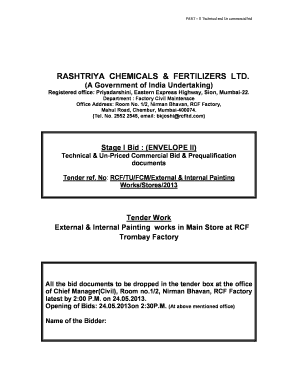Fill and Sign the Unpriced Commercial Proposal Form

Useful instructions for finalizing your ‘Unpriced Commercial Proposal’ online
Are you fed up with the inconvenience of handling documents? Look no further than airSlate SignNow, the leading eSignature platform for individuals and businesses. Bid farewell to the lengthy process of printing and scanning documents. With airSlate SignNow, you can easily finalize and sign documents online. Utilize the extensive tools included in this user-friendly and affordable platform and transform your approach to document management. Whether you need to approve forms or gather eSignatures, airSlate SignNow manages everything smoothly, with just a few clicks.
Follow this comprehensive guide:
- Sign in to your account or initiate a free trial with our service.
- Click +Create to upload a file from your device, the cloud, or our template library.
- Open your ‘Unpriced Commercial Proposal’ in the editor.
- Click Me (Fill Out Now) to complete the document on your end.
- Add and assign fillable fields for other parties (if necessary).
- Proceed with the Send Invite settings to solicit eSignatures from others.
- Save, print your copy, or convert it into a multi-use template.
Don’t fret if you need to work together with others on your Unpriced Commercial Proposal or send it for notarization—our platform provides you with everything you need to accomplish those tasks. Register with airSlate SignNow today and elevate your document management to a new level!
FAQs
-
What is an Unpriced Commercial Proposal?
An Unpriced Commercial Proposal is a document that outlines the terms and conditions of a potential business agreement without specifying the pricing details. This type of proposal allows businesses to present their offerings and negotiate terms before finalizing costs. Using airSlate SignNow, you can easily create and send Unpriced Commercial Proposals for efficient negotiations.
-
How can airSlate SignNow help with Unpriced Commercial Proposals?
airSlate SignNow streamlines the process of creating and sending Unpriced Commercial Proposals by providing customizable templates and an intuitive interface. You can quickly draft proposals, add necessary details, and send them for eSignature, ensuring a smooth workflow. This efficiency helps businesses save time and focus on closing deals.
-
Are there any costs associated with using airSlate SignNow for Unpriced Commercial Proposals?
While airSlate SignNow offers various pricing plans, the cost of using the platform for Unpriced Commercial Proposals depends on the features you choose. The platform is designed to be cost-effective, providing businesses with the tools they need without breaking the bank. You can explore different plans to find one that fits your budget.
-
What features does airSlate SignNow offer for managing Unpriced Commercial Proposals?
airSlate SignNow includes features such as customizable templates, document tracking, and eSignature capabilities specifically for Unpriced Commercial Proposals. These features enhance collaboration and ensure that all parties can review and sign documents efficiently. Additionally, you can integrate with other tools to streamline your proposal process.
-
Can I integrate airSlate SignNow with other software for Unpriced Commercial Proposals?
Yes, airSlate SignNow offers integrations with various software applications, allowing you to enhance your workflow for Unpriced Commercial Proposals. You can connect with CRM systems, project management tools, and more to ensure seamless data transfer and collaboration. This integration capability helps you manage proposals more effectively.
-
What are the benefits of using airSlate SignNow for Unpriced Commercial Proposals?
Using airSlate SignNow for Unpriced Commercial Proposals provides numerous benefits, including increased efficiency, reduced turnaround time, and improved document security. The platform allows for easy tracking of proposal status and ensures that all parties can access the documents they need. This leads to faster negotiations and a higher likelihood of closing deals.
-
Is it easy to create an Unpriced Commercial Proposal with airSlate SignNow?
Absolutely! airSlate SignNow simplifies the process of creating an Unpriced Commercial Proposal with its user-friendly interface and customizable templates. You can quickly input your information, adjust the layout, and send it out for signatures without any hassle. This ease of use makes it accessible for businesses of all sizes.
Related searches to unpriced commercial proposal form
Find out other unpriced commercial proposal form
- Close deals faster
- Improve productivity
- Delight customers
- Increase revenue
- Save time & money
- Reduce payment cycles

